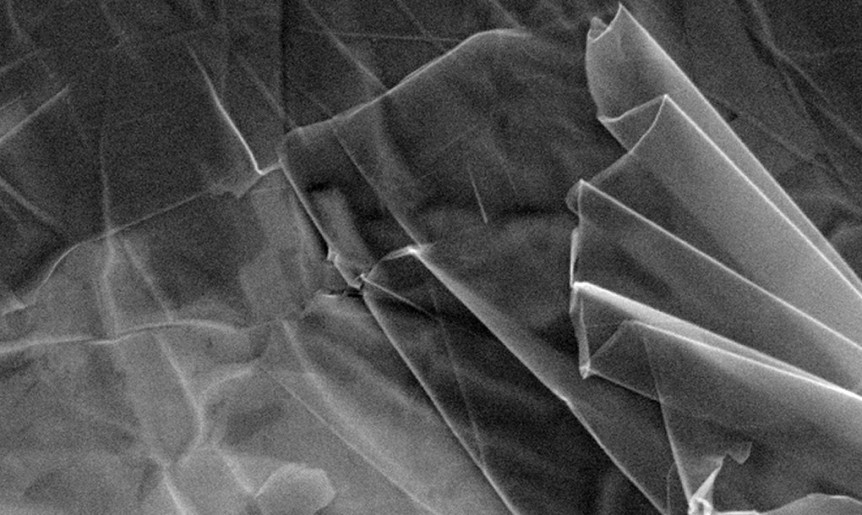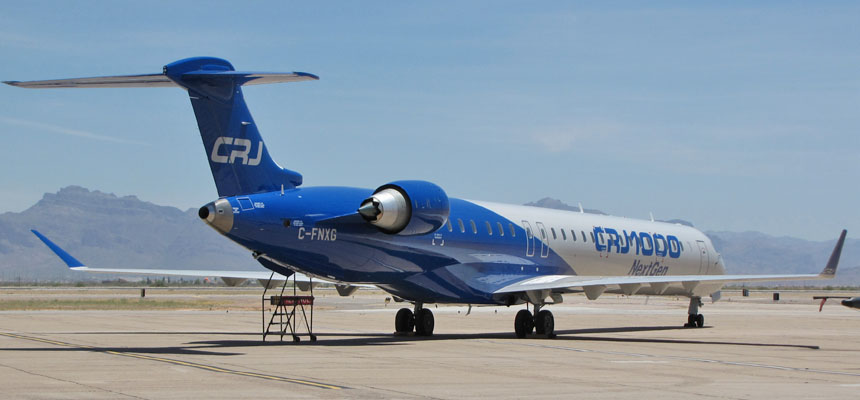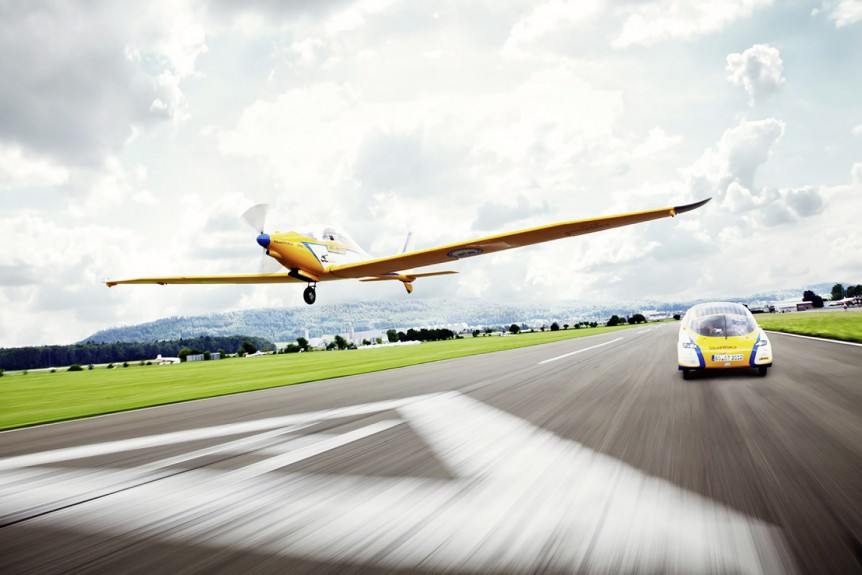The federal government is creating yet another round of incentives to “spark” development of “significantly smaller, lighter and less expensive batteries.” A consortium of researchers led by Pacific Northwest National Laboratory (PNNL) will receive up to $10 million a year over five years to perk up battery performance, with the goal of creating a 500 Watt-hour per kilogram battery pack, about three times that of currently available commercial offerings. The new batteries should be “reliable, safe and less expensive,” according to consortium director and PNNL materials scientist Jun Liu. Research will come from partners nation-wide, including: Brookhaven National Laboratory Idaho National Laboratory SLAC National Accelerator Laboratory Binghamton University (State University of New York) Stanford University University of California, San Diego University of Texas at Austin University of Washington IBM (advisory board member) Even though the goals and the budget seem similar to those explained by Energy Secretary Steven Chu two years ago, his directive included research on alternative materials, such …
Graphene Supercapacitor Shows Promise and Longevity
A forever battery would be nice, wouldn’t it? Something low cost that could be recharged in seconds, time after time, indefinitely, and be about as environmentally sensitive as Greenpeace and the Sierra Club combined – there’s the ideal battery. That might seem like a miracle, and it relies on that miracle material – graphene – for its many astounding properties to help make this flexible battery a reality. Dr. Han Lin of Swinburne University in New South Wales, Australia has 3D printed his prototype battery at a much lower cost than with previous production techniques. The immediate “take” on this material is that it could be used in things like watch straps, powering the attached timekeeper, or in (inter)active sports clothing. Of course, this blog looks for larger applications, such as something that could be used in electric aircraft. Graphene has the potential to be a structural material (about a hundred times stronger than steel, according to 3ders.org) and a …
Want to See a Big Tesla Fly?
Teslarati, the forum for Tesla fans, includes a fascinating concept for an electric/jet airliner, as proposed by Peter Egan, a web-site member from Artarmon, New South Wales, Australia. His proposal could be applied to smaller jet airliners in anything up to the Boeing 737 or Airbus A320 class. He uses a Bombardier CJR1000 100-passenger regional jet for his example, and shows a large motor pod-elevator replacement on each side of the fin, with counter-rotating propellers on either side of the rudder. (Whether this arrangement would be aerodynamically or structurally sound remains open to investigation.) His concept drawing includes the existing General Electric-CF34-8C5A1 turbofans for comparison, but they would be removed. The GE engines put out 13,630 pounds (60.6 kiloNewtons) of thrust at takeoff. Peter substitutes a pair of twin- motor/counter-rotating propeller units, each with: two permanent magnet electric motors, rated at 1,200 kW (1,608 hp.) continuous power, with 1,400 kW (1,876 hp.) each available for takeoff. That totals 5,600kW (7,506 …
Kreisel Brothers – Austrian Entrepreneurs
We keep hoping for the long-awaited 10X, or even 5X battery that would make electric aviation “pop” in a significant way. The Kreisel brothers in Austria are not developing new batteries or chemistries, but through careful design and manufacturing techniques, manage to reduce weight in their battery packages – one example being the two “ultra-lightweight battery units” they supply for PC-Aero’s Elektra One. With a total weight of “just 64 kilograms,” (140.8 pounds), the packs “provide [an] efficient and reliable energy supply for a range of 400 kilometers (248 miles)… a flight duration of three hours [and a] speed of 160 kilometers per hour (99.2 mph).” Each pack stores 5.8 kilowatt-hours of electrical energy, or 5.52 kw-hr./kg. That’s roughly an eight-percent savings over the Teslas’s battery, if all else is equal. It might be a harder number to achieve in a small package, there probably being a certain irreducible minimum of things that weigh down the small package disproportionately more …
Siemens 260 kW Motor First Flight, and a Siemens at the 2016 SAS
Siemens Motors announced the first public flight of their SP260D motor in an Extra 330LE aerobatic aircraft – although the motor had made its maiden, but not so public, flight on June 24. Putting out 260 kilowatts (348.5 horsepower) in near silence according to Siemens, the motor will certainly be capable of putting the Extra through its paces. The motor weighs only 50 kilograms (110 pounds), and with its Siemens inverter adds little weight to the nose of the Extra. Pipistrel-designed battery packs grouped behind it push the power-pack weight toward the center of gravity, which should enhance handling qualities. As Electronics Weekly reports, “Support structures have been on a finite element analysis diet. The aluminum ‘end shield’, for example, which supports the motor end bearing and takes all the propeller forces, went from 10.5 (23.1 pounds) to 4.9kg 10.8 pounds) .” This presentation shows the process on page 12. A finite element analysis program, NX Nastran, removed bits that …
Pikes Peak 2016 – A Record-Setting Year
Electric vehicles did not win the Broadmoor Pikes Peak International Hill Climb outright this year, but their overall showing was an indicator of how much progress designers have made in the last five years. Everyone’s a Winner! In 2011, Chip Yates rode his UQM-powered motorcycle to a record 12:50.094 time. Part of the 12.42-mile course was dirt road then, adding to the thrills, but slowing overall times. “I felt bad for the fans that watched me through the dirt section. They saw an electric superbike going 1 mph around the hairpins in the dirt.” He added this declaration, “We got a 12:51 time, I’ll take it, it’s plenty good for a rookie, and it’s plenty good for a home-made bike made by three volunteers.” He removed the motor from the bike and powered a modified Long-Eze aircraft to set several world records. Astonishingly, all but five of this year’s 78 finishers (out of 97 starters) had better times than Chip’s …
Kokam Introduces Bullet-Proof Battery
Lithium battery puncture tests have provided many time-wasting moments on YouTube, presenting pyrotechnic displays in many versions. Most are explosive and fiery examples of what is referred to euphemistically as “rapid deconstruction.” What if a battery could take a bullet and still offer superior energy, power and reliability? Kokam answered this question for the military, showing that its new NANO battery technology “do[es] not experience thermal runaway when… shot,” according to a June 13 announcement. Intended “for the defense industry for use in submarines, support vehicles, armed fighting vehicles, and unmanned systems,” the battery combines three lithium-ion chemistries – Lithium Iron Phosphate (LFP), Lithium Titanate Oxide (LTO) and Nickel Manganese Cobalt (NMC) – into a single battery, Battery University explains the pros and cons of each chemistry: LFP: Li-phosphate has excellent safety and long life span but moderate specific energy and elevated self-discharge. LTO: Li-titanate excels in safety, low-temperature performance and life span. Efforts are being made to improve the …
Follow the Battery Money
With Tesla’s $5.5 billion “gigafactory” already producing cells for its line of cars and its “Powerwall” home energy storage systems, it now seems like a tenuous, toe-dipping approach with Volkswagen announcing its own battery plans. VW may invest up to $15.5 billion according to Tech News, the outlet projecting the highest number. Others with less money but promising technologies are also betting on better batteries. Tesla Gigafactory Grand Opening – More to Come With only 14 percent of its total area completed, the Tesla Gigafactory on Electric Avenue (what else?) near Sparks, Nevada, is already up and running, producing Tesla’s Powerwall and Powerpack battery systems. According to Teslarati.com, “Elon Musk told investors at the 4th quarter earnings call earlier this month… those products are already profitable and are expected to become more so as volume increases.” Other projections anticipate that the Gigafactory will “be net zero and have no carbon emissions,” “net zero meaning that it will create more electricity …
2016 Isle of Man TT Zero: Five Starters, Five Finishers
Electric motorcycles are a recent addition to a historic race on a tiny island neatly centered in the Irish Sea between Scotland, Northern Ireland, the United Kingdom and Wales. Its 75,000 inhabitants cluster in villages that look like movie sets of rustic, pre-war England. Manx cats come from the island, tailless little creatures with long back legs that look almost rabbit-like. Bonus fact: Maurice, Robin and Barry Gibb (the Bee Gees) were all born on the Isle of Man. Having so few people to share the 688 miles of roads could make speeding a huge temptation. The two-lane roads are twisty and narrow, though, and even without an official speed limit on many thoroughfares, speeds rarely average over 50 mph. Drivers are limited to that speed for the first two years after they get their license, and it’s the qualifying minimum speed for motorcyclists wanting to compete in the annual race. That means a run around the Snaefell Mountain course …
Sustainable Aviation Symposium 2016: Would You Believe Eric Darcy Deliberately Blows Up Batteries?
Eric Darcy is NASA’s go-to guy for battery safety. He is Battery Group Lead for Projects & Integration at NASA-Johnson Space Center in Houston, Texas, and consults frequently with the National Renewable Energy Laboratory in Colorado. His talk at the First Sustainable Aviation Symposium was titled, “Passively Thermal Runaway Propagation Resistant Battery Module That Achieves > 190 WH/KG.” The output may not sound like much, being at the middle-to-high end of lithium battery performance: but the promise of passive thermal runaway resistance is all-important. Remember, too, that larger output numbers are usually for individual cells. Putting cells into a battery pack with battery management system (BMS) components, wiring, etc. usually reduces overall performance per weight. A few years ago, Dr. Darcy told his table at lunch during a symposium, that by matching batteries closely (to a fanatical degree, it seemed), overseeing their production under conditions exceeding six sigma quality control levels, and testing them intensely, he had built battery packs for space …



